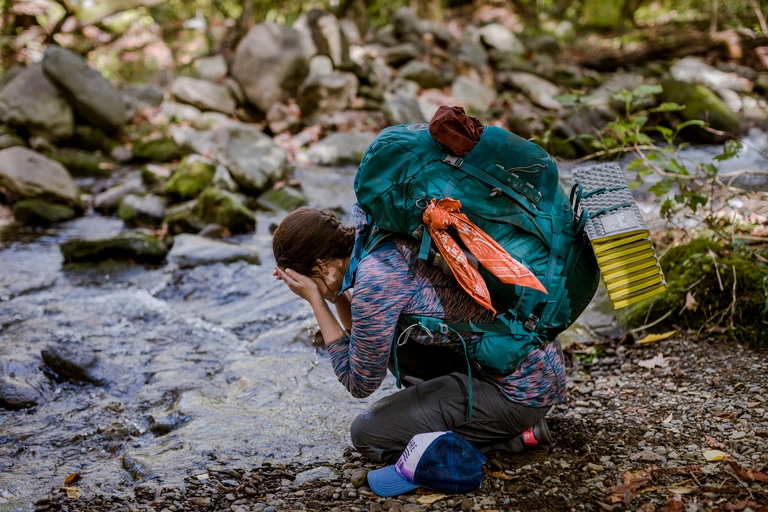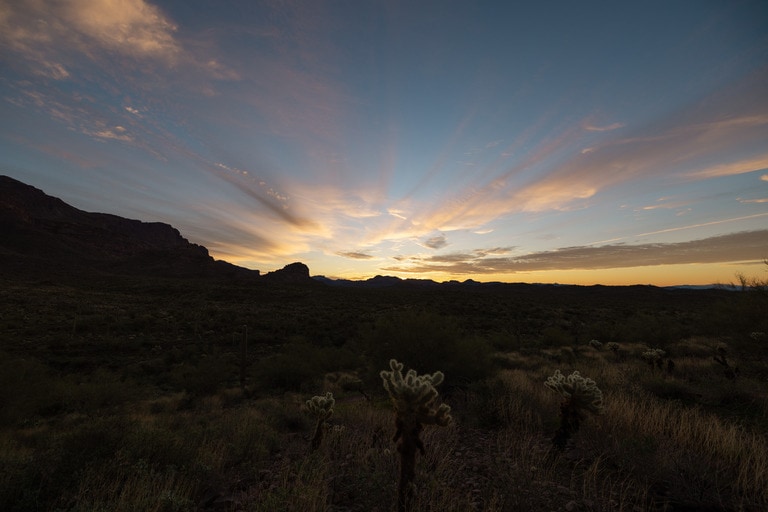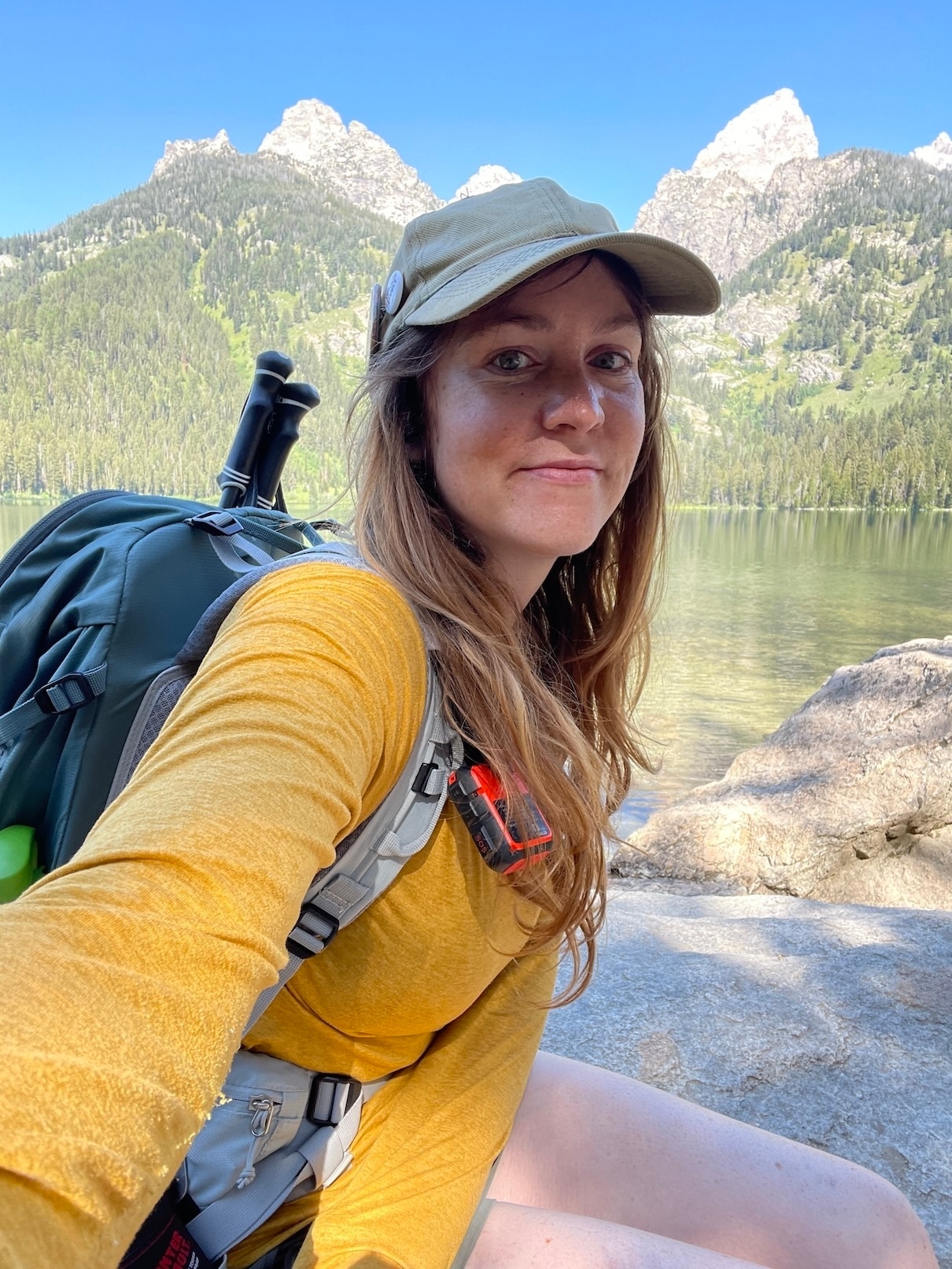Of all the skills a hiker or backpacker might need, perhaps the most important one is knowing when to turn around and go home. While we may often link quitting with failure, hikers exhibit maturity and responsibility when they recognize and respond appropriately to factors like insufficient resources, inclement weather and their own limitations.
In the unpredictable world of adventurous hiking, knowing why, when and how to turn back on a hike isn't just a skill—it's a survival strategy.
In this guide we'll discuss how to avoid needing to quit on a hike, as well as 10 reasons to consider turning back early:
Not enough food and water: Lack of food, especially salty snacks, can lead to exhaustion and electrolyte disorders, among other dangerous situations, so prioritize both water and snacks for your safety during hikes.
Lacking appropriate gear: Hiking without layers or emergency supplies can put you at great risk when conditions change unexpectedly.
Dangerous weather: Climate conditions, especially at elevation, can quickly turn threatening, ruining the best-laid plans.
Exhaustion: If fatigue feels different or unusual symptoms accompany it, staying on the trail could become deadly.
Loss of daylight: Darkness can compromise safe passage and pose heightened risk of animal attack, among other dangers.
Injury or illness: Severe nausea and diarrhea are no-brainers, but seemingly less dramatic issues like blisters can also be a valid reason to retreat.
Treacherous conditions: Heed warnings about recent rains and flash-flood alerts, and always check avalanche reports and wildfire risk.
Scary or overly technical terrain: Steep drops and highly challenging terrain can intimidate even experienced hikers, so consider turning back if you feel ill-equipped to tackle it.
Aggressive or dangerous wildlife: Listen to any warnings from local authorities and fellow hikers, and prioritize safety over adventure.
A gut feeling: Trusting your instincts can be crucial when deciding to quit a hike.
How to Avoid Needing to Bail on a Hike
There’s plenty you can do before you head out on your adventure to avoid turning around on a hike. Before you leave, be sure to:
Always pack the Ten Essentials.
Prepare yourself physically. (Read How to Train for Hiking and How to Train for Backpacking.)
Plan your route thoroughly using standard and topographical maps. (Read Intro to Navigation for information about reading topo maps, choosing and using a GPS and how to use a compass.)
Research what to expect in terms of terrain and conditions.
Check weather forecasts at the mountain base and the summit. (Read Weather Basics for Backpackers.)
Verify access to safe drinking water and plan accordingly. (Read Hydration Basics for information about water quantities, water supplies, and portable filters or purifiers.)
Pack more than enough food. (Read Meal Planning for Ultralight Backpacking for more information about how much food to pack for an outing.)
Test your gear in advance, including the ins and outs of your first-aid kit.
Carry a personal locator beacon or satellite messenger, especially if hiking solo. (Read How to Choose Between a PLB and a Satellite Messenger.)
Reasons for Quitting a Hike
Picture yourself nearing the summit of a challenging peak. You drove several hours to reach the trail and started the trek under clear skies. Suddenly, as you burst through the treeline, you hear a distant rumble and notice dark clouds in the distance—and realize you forgot to pack rain gear, a headlamp and your emergency shelter. While the top seems within reach, the risk of lightning or hypothermia now looms large. Do you press on and potentially put yourself at risk, or heed the warning signs and turn back?
This split-second decision could determine your fate.
That’s the situation I found myself in as a newbie hiker climbing Mount Mansfield, the highest peak in Vermont, and I made the wrong choice. Although I reached the summit, I encountered terrifying thunderstorms on the return trip. I waded through a trail-turned-creek in the dark. By the time I returned to my car hours later, I was experiencing hypothermia symptoms. At first, I took pride in never turning back on a summit attempt. But I now realize I didn't survive that hike because I was skilled, super fit or smart—I was just lucky.
Seth Thomas, a personal trainer and former hiking guide based in Albany, New York, aborted two summit attempts during his quest to bag all 46 Adirondack High Peaks. One outing in the Santanoni Range took a turn when he fell into a beaver pond early on, and then a few more setbacks prompted him to bail. “Knowing when to turn around is just lifesaving," he says. "We all think it's never going to happen to us, but people do lose their lives up on the mountain."
In summer of 2023, I experienced the first DNF (did not finish) in my hiking career—I bailed on a summit attempt in the Adirondacks, turning back less than a mile from the top of Mount Seymour. But I was actually proud of myself because it meant I'd leveled up my hiking skills.
There wasn't just one reason I quit that day. It was a series of snags—briefly getting lost, falling in a mud pit, carrying too much gear and the threat of rain and lightning storms—that made me feel like it was time to call it quits. Even with the most thorough preparation, you can't control everything—especially when it involves Mother Nature.
While I have yet to return to that mountin, I take comfort in knowing it's waiting for me when I'm ready. Meanwhile, Ramsdell returned to Europe in 2022 and had an incredible experience completing the Tour de Mont Blanc. Thomas, too, completed his treks and became an ADK 46er shortly after those thwarted attempts.
Reflecting on these experiences, one thing becomes evident: Mastering the ability to recognize and act on these moments is an advanced skill in hiking. As Ramsdell astutely observes, "Knowing when to quit can be a lifesaving skill, and it's just as crucial to develop as fitness, navigation skills and other priorities for hiking adventures."
With that in mind, here are 10 reasons to turn back on a hike.
When you don't have access to enough food or water

Neglecting food intake, especially salty snacks, can lead to conditions like exhaustion, overhydration or hyponatremia (a serious electrolyte disorder that resulted in a hiker’s 2015 death in the Grand Canyon). Always pack more food than you need, at least one extra day’s worth—and you need to remember to eat it. (Read: Backpacking Food Ideas & Meal Planning)
For hydration, a good rule of thumb is to drink one half-liter of water per hour of moderate activity in moderate temperatures. The National Park Service (NPS) recommends drinking at least one gallon of water per day in desert conditions like Death Valley and the Grand Canyon to replace sweat loss. So, if you find yourself without sufficient water or access to safe drinking sources, it's wise to reconsider your hike. (Read: How to Treat Water in the Backcountry)
When you lack appropriate clothing or gear
Although you should always pack the Ten Essentials, hiking without adequate gear is not uncommon—a 2013 study in New Hampshire found day hikers, in particular, often underestimate risks and skimp on preparation. However, Matt Graber, previously a backpacking guide with REI, says even seemingly minor oversights like forgetting sun protection can cause big problems. "If you get a bad sunburn, it will destroy your trip," he says. Not only will it be painful to carry a backpack, but it could also result in heatstroke or sun poisoning. (Read: How to Choose Sun Protection (UPF) Clothing)
When choosing what layers to wear and what to bring, think about what you would need to survive a long, inactive period out in the elements. Common options include a layer of underwear (tops and bottoms), an insulating hat or balaclava, extra socks, extra gloves and a synthetic jacket or vest. For winter outings, bring insulation for your upper body and legs. (Read: What to Wear Hiking)
When the weather changes unexpectedly
Mountain weather is notoriously unpredictable, influenced by factors like elevation changes and temperature shifts. This was evident during a 2022 group hike to the summit of Half Dome in Yosemite National Park. Despite clear skies at the start and a forecast suggesting little rain, a sudden storm forced the hikers to seek refuge in a cave, where lightning struck outside, injuring two members.
The takeaway? Thorough preparation may not always shield hikers from adverse weather like snowstorms, high winds or lightning. Sometimes, the best choice is to retreat, no matter how well you've prepared. When in doubt, ask the land manager for guidance about common and unsafe weather conditions. (Read: Weather Basics for Backpackers)
When you're too exhausted (mentally or physically)
It’s critically important to physically prepare for a challenging adventure, whether that involves elevation or acclimatization training. "But if you've done all of that and you're still feeling off, then it's time to have a pretty serious conversation with yourself about what to do next, especially when hiking solo," says Graber. "Because if something happens and you're by yourself and it's not a well-traveled trail, things can go south real fast."
Instead of subscribing to the "no pain, no gain" mentality, seasoned backpacker, outdoor professional and blogger Claire Ramsdell says it's essential to recognize and listen to your body's signals. She encourages hikers to ask themselves, “Is this the same generalized feeling of fatigue I’ve had during exercise in the past, or am I having other symptoms like confusion and dizziness?” If it feels different, it might be wise to turn back.
When darkness looms

New York state forest rangers cite lacking a headlamp as one of the most common mistakes they see when rescuing hikers. If you're in the wilderness longer or later than expected, nightfall is approaching and you don't have a light source, heading back could even save your life. In one tragic 2011 incident in Utah, a hiker died after falling from a cliff while attempting to return from The Wave after dark. Apparently, his flashlight was defective. (Read: How to Choose Flashlights and How to Choose Headlamps)
When you’re sick or injured
Never, in his over two decades as a backpacking guide, has Graber ever had to escort another hiker out due to elevation sickness, a solid reason to bail. Still, he's helped members of his groups through other troubling illnesses that involved vomiting and diarrhea. “If they can't get the vomiting under control within an hour, then we sit down for another half an hour,” he explains. “And if things are not good by the end of that second hour, then we're walking them out.”
But the situation doesn’t necessarily need to be that dramatic to warrant turning back. "Blisters will also destroy a trip," Graber adds. "Your feet are everything, so if you can't walk, it's a good reason to turn around." The bottom line? Any injury or condition that impairs mobility or causes significant discomfort is reason enough to retreat. (Read: A Guide to Common Hiking Injuries)
When trail conditions are dangerous
The first time Graber led a group on a loop through Kings Canyon in the Sierra Nevada mountain range, the weather was perfect, and everything went according to plan. But things started to go wrong when he returned the following week with a different group. Heavy rain and other hiccups prompted the group to turn back to avoid an impassable creek crossing. Continuing would have forced them to backtrack on the loop, adding significant miles to the itinerary and sparking a domino effect of consequences. They would’ve likely run out of food and fuel and missed their flights home. "We decided it's better to be safe than very, very sorry," Graber explains.
Ramsdell says flash-flood warnings are another excellent reason to turn around or reschedule. “If you had to win a permit to do the hike, I know it's disappointing to give that permit up, but it's better than giving up your life," she says, citing recent fatalities in the Buckskin Gulch slot canyon in Utah as a sobering example.
When you’re intimidated by the terrain
Some of the most stunning views require navigating narrow paths with sheer drops. However, even experienced hikers can feel overwhelmed by fear of heights and exposure. Angels Landing in Zion National Park, for example, is known for its vertigo-inducing drop-offs, which have resulted in more than 15 deaths. If you doubt your ability to continue and it’s safe to turn back, strongly consider doing it.
When wildlife poses a threat
Certain animals—particularly grizzly bears—can pose a danger, so it's essential to consult local land management offices before entering their habitat. But any bear accustomed to human food can exhibit increased aggression, so it's crucial to heed warnings from authorities or fellow hikers about potentially dangerous animals.
Beyond that, Graber advises hikers to trust their instincts, recalling a tense encounter with a growling mountain lion. “Every hair on the back of my neck stood up,” he recalls. “It was terrifying.” If something doesn't feel right, it might be best to leave. (Read: Wildlife Safety Tips)
When you just have a gut feeling
The second time Thomas decided to turn back in the Adirondacks, it was based on weather conditions and approaching sunset, among other, smaller factors. "It was a sudden ping of fear. It just came from the inside," he remembers. "It was just a voice like, 'You have to turn back.' I felt that right through to my fingertips."
Similarly, Ramsdell emphasizes the importance of respecting your instincts, recalling a situation in 2019 when she bailed on an attempt to complete the Tour du Mont Blanc after the Courmayeur Valley was evacuated due to a glacier scare. Locals reassured her that it would likely be OK to continue. Still, she felt uncertain due to complications like predicted thunderstorms, a nagging knee injury and reduced transportation options.“If you stay safe, you can always come back another day," she says, emphasizing that your health and safety are more important than any planned trip—no matter how special it is.




